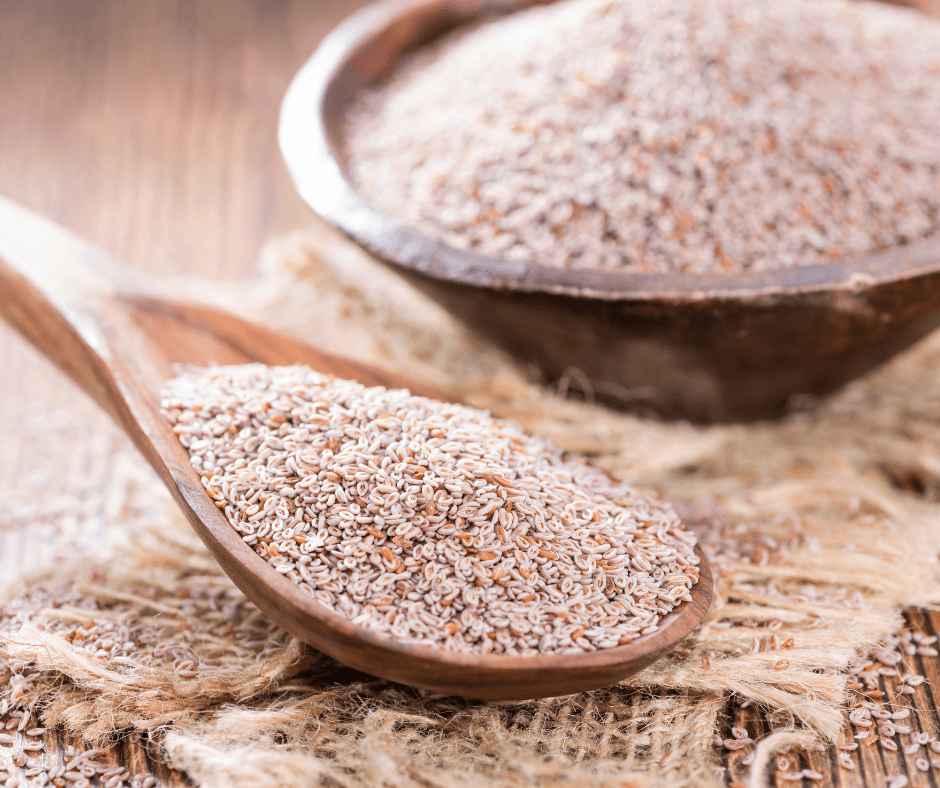Fibre and your pet's gut health

Is your pet regular? Feeding our pets a well-balanced, quality diet can hold the key to supporting a happy and healthy gut. One particular component of your pet’s diet that can have many beneficial effects is fibre. This can help encourage regular and well-formed motions, support gut health and assist in controlling your pet’s waistline by regulating their appetite.
You can use the links below to jump straight to a section if you prefer:
The use of fibre in specific conditions
How can I add fibre to my pet's diet?
Will my pet have any side effects from a high fibre diet?
What is fibre?
Fibre is the tough, indigestible part of plants, vegetables, fruits and cereals. The term ‘indigestible’ means that our pets (and all mammals) are unable to digest this fibrous material on their own. Instead, the huge number of bacteria and other micro-organisms that live in the gut, collectively known as the microbiota, are needed for breaking down fibre into nutrients that can be absorbed and utilised by the body.
You may notice that fibre is often described as soluble or insoluble, which basically refers to how easily it is broken down during digestion. Each type has varying, beneficial properties which make them both equally important parts of a balanced diet necessary to support your pet’s gut health.
Did you know… The cells lining the gut have a high energy requirement and are replaced every 4 to 6 days! Fibre provides an important energy source which allows this renewal process to happen, ensuring normal gut health and function.
The benefits of fibre
Gut health
The microbiota break down tough fibre molecules through a process called fermentation, producing short-chain fatty acids (SCFAs) which have many beneficial effects. Firstly, they provide energy to the cells lining the gut allowing them to perform their day-to-day functions. Gut cells have a high energy requirement as they play a key role in the absorption of nutrients across the gut wall for use around the body, and are important in forming a defensive barrier to stop pathogens entering the bloodstream. Fibre can also help maintain the intestinal pH (acidity) at an optimum level to prevent the growth of harmful bacteria.
Keeping your pet ‘regular’
A combination of soluble and insoluble fibre helps to regulate the speed at which food moves through the digestive tract, with the remarkable ability of either speeding up or slowing down poop production. This means that fibre can aid pets that are pooping more frequently than they usually do (often due to having looser stools than normal), or pets at the other end of the spectrum with bowel movements that are sporadic or infrequent.

Creating the perfect poop
Mixed fibre types have the fantastic ability to normalise stool consistency by drawing in water, and breaking up stools with gas produced during fermentation by the microbiota. Psyllium is a mainly soluble fibre that forms a gelatinous substance when combined with water, helping to add volume and softness to firm stools, or assisting in the absorption of excess fluid from loose stools.
Feeding the microbiota
Fibre can act as a prebiotic and is a great food source for the ‘good’ bacteria living within the gut.
A healthy microbial population is important for a number of reasons including:
• Production of certain vitamins
• Limiting the growth of potentially harmful bacteria
• Maintenance of a normal gut lining
• Supporting the immune system.
Supporting the immune system
The immune system is made up of specialist organs and cells (e.g. white blood cells) that are responsible for protecting the body from potentially damaging microorganisms that could cause disease (e.g. harmful bacteria and viruses). Up to 70% of your pet’s immune system resides in their gut due to its pivotal role acting as a first line of defence, stopping anything potentially harmful that is eaten from crossing the gut wall and gaining access to the rest of the body via the bloodstream. Fibre has been shown to promote gut immunity by four main mechanisms:
- Supporting the production of the healthy mucus lining of the gut wall which helps prevent harmful organisms attaching to gut cells and reproducing.
- Helping to maintain a healthy, diverse microbiome, which directly communicate with immune cells in the gut, making them ‘more prepared’ to defend against harmful organisms.
- SCFAs (the fermented by-product of fibre) can strengthen the gut wall (barrier to the outside world), and can influence the function of other immune cells.
- Fibre can prevent the growth of harmful bacteria in the gut by stopping them from sticking to the cells lining the gut.
The use of fibre in specific conditions
Increasing dietary fibre is known to have many useful applications and has beneficial effects in the prevention and management of many health conditions. However, if your pet has been diagnosed with a specific condition by a qualified professional, any change in diet should be discussed with your vet first and should not be substituted for medications or other prescription diets.
Diabetes
Fibre has been shown to minimise fluctuations in blood sugar levels by slowing down the absorption of carbohydrates into the bloodstream, altering the time it takes for food to pass through the digestive tract and even influencing insulin sensitivity. However, any dietary changes in diabetic animals should be done very cautiously and discussed with your vet first.
Diarrhoea and constipation
Fibre can help normalise poop consistency at both ends of the spectrum! It can add moisture to the gut contents of animals with constipation or absorb water in animals experiencing diarrhoea, thus can be useful in the management of many intestinal disorders. Soluble fibres, such as psyllium, can absorb water and produce gas when being fermented so can help break up firm poop into softer, voluminous stools.
Obesity and body weight management
Fibre can be a great addition to the diet of dogs that are overly greedy, or have a few pounds to lose! Cellulose is an insoluble fibre that, aside from being very low in calories, also has the ability to bind 3.5 to 10 times its weight in water which increases the volume and bulk of digesting food and helps create a feeling of fullness and satiety. This can help control calorie intake (as pets feel fuller for longer) and aid weight loss.
Scavenging
If your pet is constantly gobbling up things they shouldn’t out in the garden, or on a walk, the addition of fibre can help reduce feelings of hunger and limit scavenging behaviours. However, eating inappropriate items (e.g. their own or other animals’ faeces, soil, rocks and other non-food items) can be a sign of an underlying medical condition or poor nutrition, so should be checked out by your vet.
Oral health
Fibre has been shown to be beneficial to oral health and is often added to dental diets or chews to help reduce and prevent plaque accumulation on the teeth.
Anal sac health
The role of dietary fibre in aiding normal anal sac emptying is not based on any specific evidence; however, it has been widely reported by many to help prevent impactions (blockages) from occurring as frequently, and low-fibre diets (such as raw meat diets) have been associated with an increased risk of impaction. One theory is that the addition of fibre to the diet can increase the size and bulk of the stool which helps the normal emptying process as a larger stool can apply more ‘squeezing’ pressure to the anal sacs as it passes. However, dogs can experience anal gland issues for a number of reasons, so be sure to book an appointment with your vet to rule out any underlying problems.
How can I add fibre to my pet’s diet?

It is worth noting that not all animals will benefit from a high-fibre diet, and it could even worsen some health conditions, so a discussion with your vet about your pet’s individual needs would be advisable before making any dietary change.
If additional fibre has been recommended by your vet, there are specifically formulated prescription diets which are balanced to ensure your pet receives the correct levels of other essential nutrients. However, high-fibre diets are often not the most palatable, therefore if your dog is fussy with food or if you do not wish to change your pet’s diet, then fibre supplements can be useful. These can be added into your pet’s normal diet, with some fibre supplements proving to be highly palatable to even the most discerning and picky pooch!
Any change in diet should be done gradually over the course of 1 to 2 weeks, to allow the microbiome time to adapt to the new food source. This is particularly important if your pet has previously been on a low-fibre diet, otherwise symptoms such as gas, bloating and loose stools may occur.
Will my pet have any side effects from a high-fibre diet?
Although fibre has a vast array of beneficial, gut-supporting effects, there are a few side effects to watch out for particularly if fibre is fed in excessive amounts. These include (but are not limited to):
- Unintentional weight loss – due to the filling and low-calorie properties of fibre, even pets at a healthy body condition can lose weight which could be detrimental to their long-term health.
- Nutrient deficiencies – excessive fibre consumption can slow nutrient absorption or bind minerals which could lead to deficiencies.
- Flatulence (gas) – one of the less glamorous side effects is increased gas production due to the fermentation of fibre. This should be minimal if fibre is introduced slowly, and will subside as your pet’s microbiome adapt to the new food source.
- Increased frequency/volume of poop – you may notice that your pet is more regular on an increased fibre diet, and the volume produced might be greater too!
If you are concerned that your pet is losing excessive weight or experiencing any of the above side effects to an abnormal level, please contact your veterinary surgeon for advice.
Want to find out more about your pet's gut health?
o Instead, the huge number of bacteria and other micro-organisms that live in the gut, collectively known as the microbiota, are needed for breaking down fibre into nutrients that can be absorbed and utilised by the body.
News

